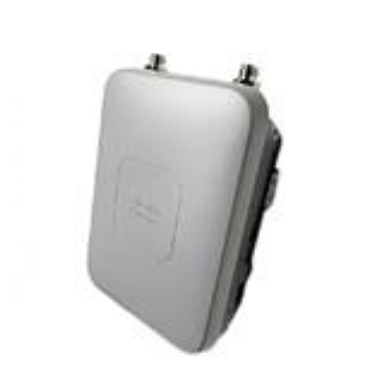 CISCO Cisco Aironet 1532e - Wireless Access Point - 802.11a/b/g/n - Dual Band
CISCO Cisco Aironet 1532e - Wireless Access Point - 802.11a/b/g/n - Dual Band
For personal help or faster delivery
+32 2 558 30 00
The Cisco Aironet 1530 Series Outdoor Access Point (hereafter called the access point or AP) is a wireless outdoor access point which is designed for use in a variety of network configurations. The access point supports wireless client access, point-to-point bridging, point-to-multipoint bridging, and point-to-multipoint mesh wireless connectivity.
The 1532 access point supports two radios (2.4-GHz and 5-GHz) and provides client access using the unlicensed RF Wi-Fi spectrum. The 2.4 GHz radio is used for client access and the 5 GHz radio can be dedicated for backhaul traffic or can used for both backhaul and client access. Depending on the radio, the access point can support 1 to 300 Mb/s data rates.
The access point is a standalone unit that can be wall, pole or tower mounted. The access point can also operate as a relay node for other access points not directly connected to a wired network. Intelligent wireless routing is provided by the patented Adaptive Wireless Path Protocol (AWPP). This enables each access point to identify its neighbors and intelligently choose the optimal path to the wired network by calculating the cost of each path in terms of signal strength and the number of hops required to get to a controller.
The access point can be configured, monitored, and operated through a Cisco wireless LAN controller (hereafter called a controller) as described in the Cisco Wireless LAN Controller Configuration Guide. The Cisco Wireless Mesh Access Points, Design and Deployment Guide, Release 7.6 describes how to plan and initially configure the Cisco mesh network, which supports wireless point-to-point, point-to-multipoint, and mesh deployments. The controllers use a browser-based management system, a command-line interface (CLI), or the Cisco Prime Infrastructure (PI) network management system to manage the controller and the associated access points. The access point supports hardware-based advanced encryption standard (AES) encryption between wireless nodes to provide end-to-end security. The access point can also be deployed in an autonomous mode and be configured via the CLI.
Results 0
| 5 | ☆ | |
| 4 | ☆ | |
| 3 | ☆ | |
| 2 | ☆ | |
| 1 | ☆ |
- User Reviews (4)
- Write Review
- Questions and Answers
- Ask Question
















 FREE Shipping.
FREE Shipping.

